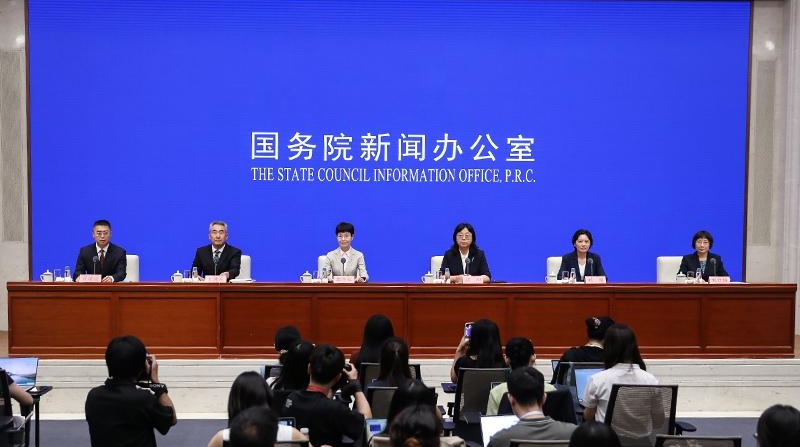Cover News:
In recent years, the NHSA has actively stepped up maternity support, raised coverage levels for maternity-related medical expenses, and undertaken extensive work to improve the maternity insurance system. Could you give us more details on these efforts? Thank you.
Liu Juan:
Thank you for your question and for your interest in the NHSA's work. The maternity insurance system, as an important component of the childbirth support policy framework, bears significant responsibility for helping build a childbirth-friendly society. The NHSA has resolutely implemented the decisions and arrangements of the CPC Central Committee and the State Council, actively responded to public concerns, and continued to make efforts in expanding coverage, strengthening protections, promoting standardization, optimizing services and tightening management. These efforts ensure policy benefits reach more families with children. We have taken four specific measures.
First, we have focused on expanding maternity insurance coverage. We have made every effort to ensure that all employees and those receiving unemployment insurance benefits are fully enrolled. We will continue to guide local authorities to include flexible workers, migrant workers and workers in new forms of employment within the scope of maternity insurance coverage. As of June 2025, the number of people covered by maternity insurance had reached 253 million.
Second, we have focused on improving coverage levels for maternity medical expenses. We have adhered to a demand-oriented approach, providing basic protection for female employees during maternity leave through reimbursement of maternity medical expenses and maternity allowances. Maternity medical expenses are now covered throughout the entire process, from the full term of pregnancy to delivery. Maternity allowances function as wage replacement for insured female employees during maternity leave. They are paid through maternity insurance to cover living expenses and ensure that infants receive the necessary care and nursing. During the 14th Five-Year Plan period, insured individuals have received maternity insurance benefits 96.14 million times, with cumulative fund expenditures totaling 438.3 billion yuan.
Third, we have focused on expanding the scope of protection. Actively responding to public concerns, all 31 provinces, autonomous regions and municipalities, as well as the Xinjiang Production and Construction Corps, have fully incorporated assisted reproductive technology into their reimbursement programs. As of 2024, more than 1 million people had benefited from this policy, and thousands of families fulfilled their dream of having children. Some provinces have included labor pain relief in their reimbursement programs, reducing both the financial burden and physical pain for expectant and new mothers. At the same time, we have expedited the approval process for pricing projects such as newborn care and family-accompanied childbirth to improve pediatric and obstetric services and better meet the public's diverse needs for childbirth services.
Fourth, we have focused on improving service management. We have optimized one-stop childbirth services and explored mechanisms that allow newborns to be automatically enrolled in basic medical insurance when their birth certificates are issued, ensuring immediate access to insurance benefits. We have further reduced procedures, simplified required materials and shortened processing times, completing review and payment of maternity allowances within 10 working days. We have actively promoted the direct distribution of maternity allowances to individuals, enabling insured people to receive timely financial support during childbirth. Currently, more than 60% of the coordinated regions nationwide have implemented direct distribution of maternity allowances to individuals.
Next, we will continue to thoroughly implement the decisions and arrangements of the CPC Central Committee and the State Council, actively adapt to the national demographic situation and development strategies, and guide local authorities in actively exploring and improving relevant policies. We will better safeguard the maternity-related rights and interests of insured persons and jointly promote the construction of a birth-friendly society.
Thank you.


 Share:
Share: 




 京公网安备 11010802027341号
京公网安备 11010802027341号